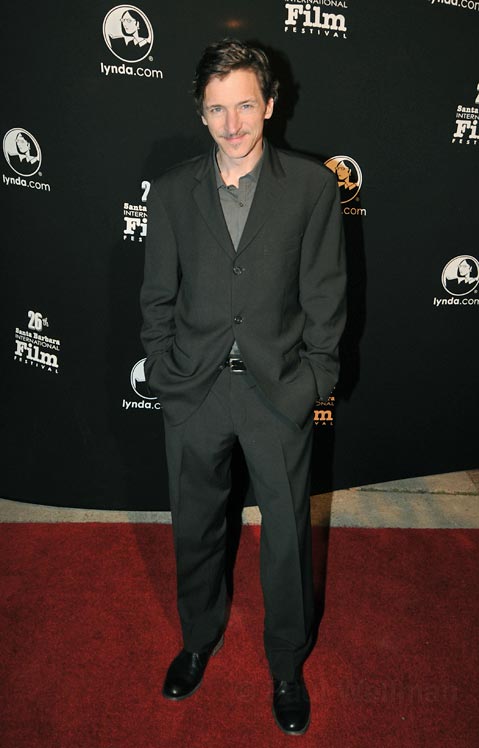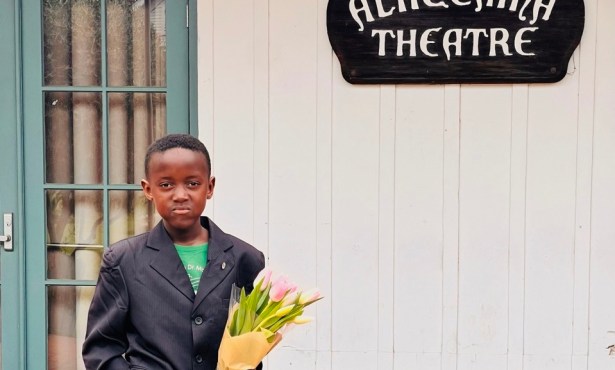Coming Back from the Cult
Director Sean Durkin and Actor John Hawkes Discuss Martha Marcy May Marlene
Martha Marcy May Marlene is the enigmatic film by first-time writer/director Sean Durkin, whose Roman Polanski-esque debut full of paranoia and dread was rewarded with best-director honors at the 2011 Sundance Film Festival. The film deals with a young woman (played by Mary-Kate and Ashley’s younger sister, Elizabeth Olsen, in perhaps the best big-screen acting debut in decades) who is trying to piece her life back together after escaping from a cult led by a Charles Manson-like character, portrayed phenomenally and frighteningly by last year’s Academy Award-nominee John Hawkes. I recently had the chance to sit down with Durkin and Hawkes to discuss their film.

This is a movie about a cult, but it’s presented to us in such an unexpected way.
Sean Durkin: We never use the word “cult,” because it’s such a strange word and has specific connotations. That line where something becomes a cult is very blurred, so we didn’t approach it with cult in mind. We just stayed with this world that we created. My goal from the very beginning was to tell this story of this group that was modern and naturalistic from the eyes of someone entering it, and I just felt that I had never seen that before. We are going to follow this girl who shows up, and we see the usual trappings — robes and religious ceremonies — and, as an audience member, those are red flags. But they are much more subtle, so you can see why she gets sucked in. I wanted to have it from her perspective because whenever someone joins a group, they don’t think it’s a cult.
John, what attracted you to the script?
John Hawkes: My agent sent me the script, and I didn’t want to read it. Again, the word “cult” is rife with preconceived notions, and we’ve seen a lot of cult leaders in the past. It seems like every year there is an attempt to make a Charles Manson–type movie, and I have never wanted to be involved in those kinds of things even though I’ve been asked. But when I read the script, the word “cult” was not really in the script, and it wasn’t about the leader. It was about this amazing young woman’s journey of what happens in the immediate aftermath in leaving a cult. As a viewer, we know so much more that they don’t know, which is a fascinating thing to watch.
Sean, there’s a line right at the beginning of the movie when she turns to her sister and asks, “How far are we from yesterday?” and then the movie cuts into a flashback. The way you play with time is astonishing.
SD: The same way we never said “cult,” we never said “flashback,” because I hate them. I never thought of these as flashbacks, because Martha is in a state of confusion and is lost in time. When someone is in a group like this, from what I understand, there are no clocks or calendars, so the idea of time gets completely lost. Therefore, she’s left with this traumatic experience and trying to make sense of it, so she’s experiencing those events in her mind and the events in the present simultaneously.
As an audience, we feel like we’re down the rabbit hole with her.
SD: I spent time with someone who was in a cult. She is a friend of ours, and the way that she described it is that fear, that paranoia, that confusion, that inability to say what had happened, lying about where she had been — it was a basic survival mode, and that is what attracted me and got me really passionate.
John, this movie deals with such sensitive material, and it must not have been easy shooting scenes with Elizabeth Olsen in her first leading role. But last year, you also dealt with an intense subject in Winter’s Bone, with Jennifer Lawrence in her first starring role. Are you going to continue …
JH: … continue to terrorize young actresses? [Laughs.] No. It’s so odd — Jennifer Lawrence is such a phenomenal talent, and as we started to shoot this film, I was immediately blown away by Elizabeth Olsen …. They have some similarities: Wise beyond their years, courageous, handling tough material — and when the director would call a wrap, they would return to their natural bubbly selves. It was kind of unnerving, actually. It takes me longer after a scene. It was lightning in a bottle, twice in the same year. It’s just incredibly heartening that there are these young people from a generation that I may not have had the most respect for, with their gadgets, but it gives me such heart and hope for filmmaking down the line. It is a wonderful feeling that independent films, especially, are in good hands.
So how did you find her?
SD: We must have seen 150 people for the role. I knew what I wanted, and no one seemed to fit. But as soon as she walked in, after the first read of the audition, I just knew something was really special.
What struck me the most about this movie is that we all play roles in our lives, struggling with our own identity in our life, work, and family, just like this young girl does.
SD: That was a major interest of mine from the beginning. It’s about finding your role in the world, and that was always really fascinating to me: how people know that if you’re the youngest in the family, you’re somebody, or with your wife, you’re somebody. It’s not that you are a different person, but each of these things brings out a different side of you. It became the core of the film. This was an extreme way to examine that and how it gets pulled apart when you’ve been manipulated and your base is taken away from you like it is from Martha.
4•1•1
Martha Marcy May Marlene is scheduled to open in Santa Barbara theaters on November 4. See foxsearchlight.com/marthamarcymaymarlene.



